While an epic and costly legal fight is still raging along the West Coast to save the protected Langebaan Lagoon from the devastating effects of a proposed 884-hectare aquaculture development zone, another international disaster has hit this blooming but controversial industry.
One can only hope this last multi-billion rand catastrophe in Norway and elsewhere will kill all aspirations of the Mossel Bay Municipality and the beleaguered department of fisheries to experiment with such a risky industry in Mossel Bay's pristine waters . . .
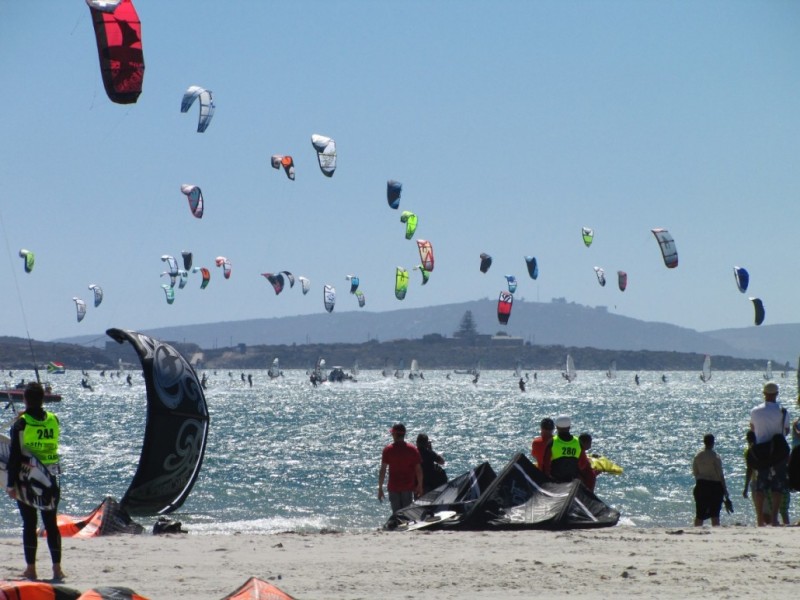
The pristine Langebaan Lagoon along the West Coast is a Marine Protected and accredited Ramsar wetland site of international importance and world destination for kite-surfing and water sport. However, this hot spot is still, despite several court cases, under threat of ecological degradation from plans by the Department of Agriculture, Forestry and Fisheries (DAFF) to develop an industrial-scale, sea-based aquaculture zone (ADZ), spanning 884 hectares.
http://www.weskusontheline.co.za/2019/05/30/3712/
https://web.facebook.com/weskus123/posts/2536405589711800?__xts_
Similar plans for fish farming along Mossel Bay's coastline were also discussed last year at a so-called INDABA. Mosselbayontheline questioned the reasons for and legality of the meeting with DAFF officials.
This is why . . .
Eight million salmon killed in a week by sudden surge of algae in Norway
Deaths come weeks after similar incident in Scotland: ‘We’re all pretty worried’
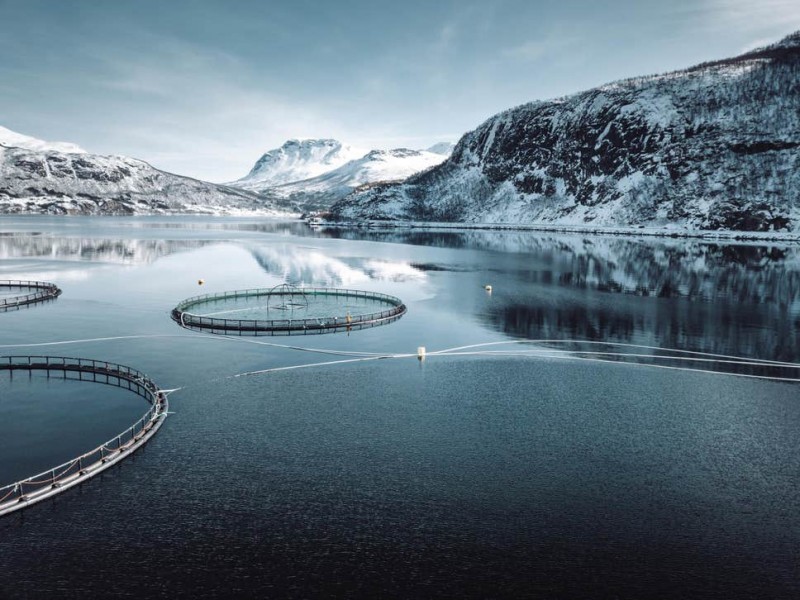
Norway exports over a million tonnes of farmed salmon every year ( Getty )
A sudden surge in algae has killed at least eight million salmon in one week across Norwegian fish farms, the state-owned Norwegian Seafood Council has said. The enormous algal blooms, due to recent warm weather, have spread rapidly around Norway’s northern coast, sticking to fishes’ gills and suffocating them.
Wild fish can swim away from the lethal clouds of aquatic organisms, but farmed fish are trapped.
The algae is continuing to spread, the Norwegian Directorate of Fisheries said. The organisation said on Tuesday that more than 10,000 tonnes of farmed salmon, with a sales price of some 620 million Norwegian crowns (£56m), had been killed, but the Seafood Council said the loss would be much greater.
“It’s too soon to say how big the losses will be for the producers. Preliminary numbers point to eight million dead fish, corresponding to 40,000 tonnes of salmon that won’t reach markets,” Seafood Council analyst Paul Aandahl said. This means the algae may already have wiped out over £200m worth of fish in total. Similar algal blooms have been reported on the west coast of Scotland in recent weeks, and experts told The Independent the algae, believed to have killed thousands of fish in Loch Fyne, had come very early in the year. Hundreds of tonnes of dead fish were removed following the bloom, according to the BBC. Norway is the world’s largest exporter of salmon and the effect of the millions of deaths will likely see half the expected growth in salmon volumes wiped out this year as a result, while prices are likely to rise, said Lars Konrad Johnsen, an analyst at Fearnleys, an investment bank which specialises in maritime industries.
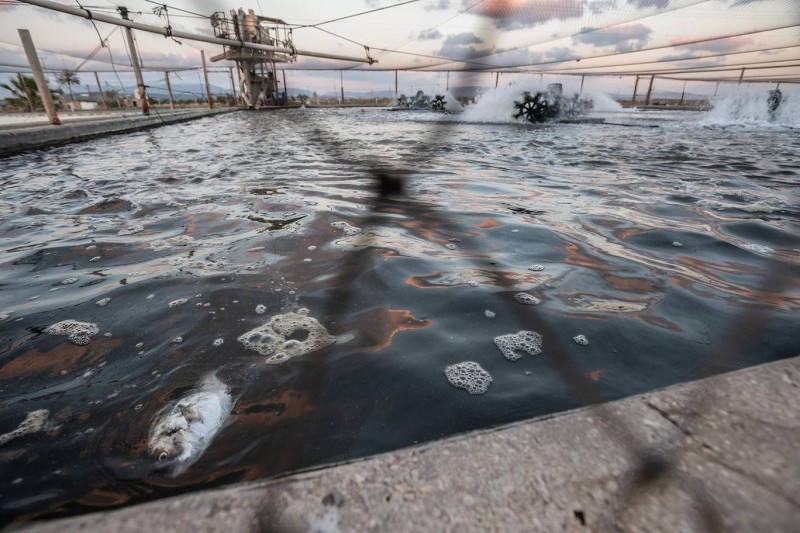
Fish tanks in the south of Australia (2017)
“Providing the net effect is something in the area of 20 – 30 thousand tonnes, this means you lose around half of the growth that was to come this year – and that will no doubt affect prices,” Mr Johnsen told Reuters. Norway exported 1.24 million tonnes of salmon in 2018, up 2.5 per cent from 2017, according to data from Statistics Norway. This year Fearnley had expected a volume growth of around 4 per cent.
The colossal death toll comes as Mowi, the world’s biggest salmon farming company, which is also Norwegian, is being investigated over claims it has misreported the volume of chemical medications it uses to fight disease at its Scottish salmon farms.
Overuse of chemicals has disastrous impacts on the surrounding marine environment. Farmed salmon stocks are already collapsing due to infestations of sea lice, which have in turn affected wild stocks.
Last month, Mowi revealed the amount of gutted salmon it produced from Scottish waters had fallen by 36 per cent in a year, with infestations of sea lice and disease blamed. Open-net salmon farms, alongside climate change and soaring demand for salmon are all blamed for impacting wild salmon populations, which have dwindled to the lowest levels ever recorded. There are now no commercial wild salmon fishing stations operating in the UK due to the collapse in numbers. “We had a major bloom here in upper Loch Fyne a fortnight ago,” Alastair Sinclair, the national coordinator for the Scottish Creel Fishermen’s Federation, told The Independent.
He said the overall impact of salmon farming was having a serious effect on the marine environment.
“It’s a huge risk to the inshore fishing industry in the sense that these farms are generally sited in sea lochs which historically have been known as breeding and spawning grounds for every species you could imagine.” “There’s basically no fish stocks left on the west coast. It’s become almost a marine desert, and the use of these chemicals (from the salmon farming industry) has not helped the situation – they are exacerbating it.” He added:
“There are many concerned communities on the west coast where salmon farming takes place, who are worried the future has not been thought of here… We’re all pretty worried.”
Also read the situation with DAFF in South Africa:
Fisheries department rots from the top
"South Africa’s fisheries authority is in a state of crisis, paralysed by a factional war between its two most senior officials and hollowed out by a culture of corruption.
This has left the Department of Agriculture, Forestry and Fisheries (DAFF) unable to perform many of its most basic tasks, including allocating fishing rights and enforcing regulations. An exodus of skilled staff, including top scientists, has aggravated the problem.
As a consequence, the fisheries sector, a critical pillar of the Western Cape’s economy, is plagued by deep dysfunction, a state of affairs that disproportionately affects poor people. Government programs intended to uplift fishing communities — now hotbeds for abalone and crayfish poaching — have repeatedly stalled.
The rot at the department, entrenched for many years, has been laid bare by a power struggle between director-general Mike Mlengana and his deputy, Siphokazi Ndudane. Even the minister for the department, Senzeni Zokwana, has become embroiled in the dispute, siding with Ndudane.
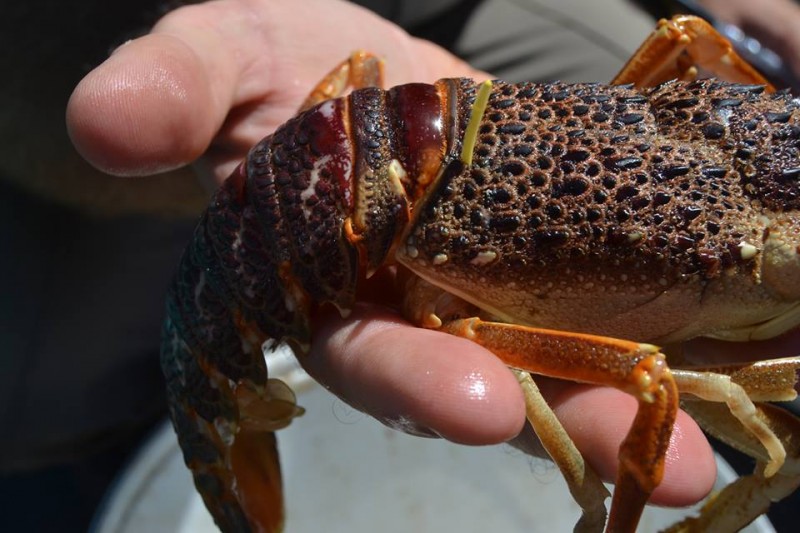
Over the last 18 months, their rift has played out in a bewildering sequence of suspensions, court cases and accusations of criminality. Reporters, law firms, unions and opposition politicians have been drawn into the fray, sometimes unwittingly being used for factional agendas.
The department has spent tens of millions of rands on legal fees for both officials, in some cases hiring opposing sets of counsel. In the last two years, the department has also commissioned at least three forensic reports into corruption, although even these have been tainted by allegations of improper influence.
From both sides, there are claims that the department has been “captured” by private interests, ranging from tenderpreneurs to abalone poaching syndicates. In this series, we review the evidence, based on court records, internal documents and more than a dozen interviews.
Instability and “looting”
A scientist by training, Siphokazi Ndudane was appointed deputy director-general of DAFF in February 2016, responsible for managing fisheries. She says she was the 11th person to fill the position in seven years. “My assumption is that the branch has to have instability for those who continue to loot the system,” she told GroundUp in a recent interview. “I was hoping to achieve order.”
This year, Ndudane was suspended for four months, accused by Mlengana of fraud, theft, extortion, forgery and other grave misconduct. Ndudane maintains that she is the victim of a smear campaign, orchestrated to sideline her and allow unfettered corruption at the department to continue. But some of the charges against her are troubling.
Mlengana himself was suspended last year on a range of charges, including allegedly steering a lucrative abalone processing contract towards his business partners. As soon as he returned to office, this April, Mlengana moved to oust Ndudane, but was temporarily blocked by Minister Zokwana.
Finally, in July, Mlengana placed Ndudane on precautionary suspension, revoking her access to the department. Ndudane took the matter to court — running up further legal costs — and returned to work, provisionally, in October. (The case is ongoing, but the judge ordered Ndudane to resume her duties.)
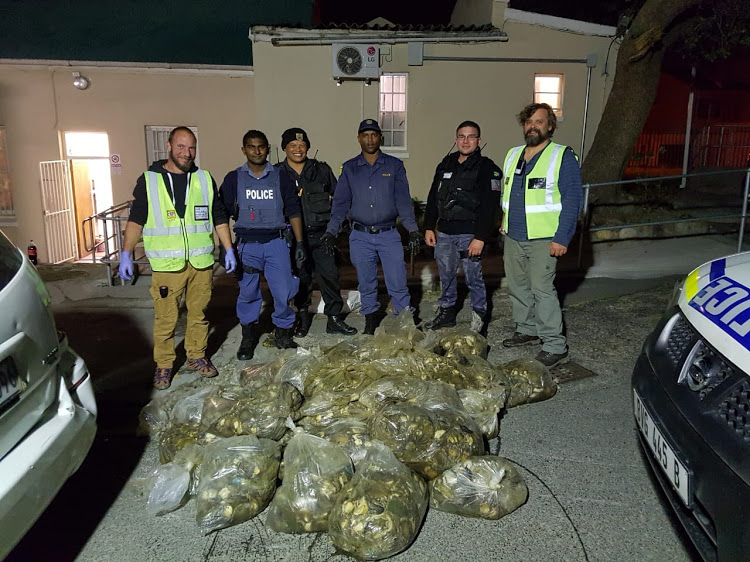
Huge amounts of abalone worth billions of rands are almost weekly confiscated in the Western Cape.
Beneath the tit-for-tat disciplinary and legal action is a deeper tussle for control of the department, which serves as gatekeeper to the fishing industry. Generating some R6 billion annually, fishing is big business in South Africa, with a wide array of companies and interest groups jostling for access. Then there is poaching, a shadow economy worth hundreds of millions more. According to Traffic, a nonprofit that monitors wildlife smuggling, poached abalone is South Africa’s third most valuable fisheries export, surpassed only by hake and squid.
With such vast sums of money at stake, the department has become a natural target for corruption. Like all government agencies, DAFF also issues tenders for big projects, ranging from construction to processing confiscated fish. At almost every level, the department has been compromised by graft, from low-paid fisheries inspectors right up to senior management. “There’s a fight to keep control of the network,” said Pieter van Dalen, the shadow minister for fisheries in the Democratic Alliance.
And in the battle between Mlengana and Ndudane, few people come out looking clean.
The abalone tender
Factions have existed within DAFF for years, industry insiders say. A “cabal” surrounding former minister Tina Joemat-Pettersson, for instance, was implicated in dodgy quota allocations and awarding a fraudulent fisheries patrol contract to Sekunjalo, owned by Iqbal Survé. Officials from that saga feature later in this series.
But the split between Mlengana and his deputy began with a suspicious abalone deal.

Since the mid-2000s, the national fisheries authority has sold off confiscated abalone, ostensibly to fund anti-poaching operations. Over time the process has become increasingly opaque, with little public oversight. In just the last decade, law enforcement agencies have reported some 4,000 abalone confiscations, averaging more than one daily. The bulk of that abalone, totalling several hundred tonnes each year, has been processed and auctioned to private firms.
In December 2016, DAFF awarded a contract to process and export 90 tonnes of abalone, priced at some R60 million, to a South African company called Willjarro. The department was to keep 70% of the money, paying Willjarro the rest. But Willjarro had no prior experience in the fishing industry, and had been added to the DAFF supplier database just a day before the tender was advertised. At the time, Willjarro also did not have necessary permits for processing or transporting abalone, technically disqualifying it from the bid.
On 19 January 2017, Willjarro’s importing partner, a seafood trader based in Hong Kong, deposited almost R7.5 million into a DAFF bank account — payment for the first batch of dried abalone. A day later, a rival South African company, Shamode Trading, launched an urgent application to review the tender, and within two days Minister Zokwana had suspended the contract.
What followed was a complex and acrimonious series of court cases involving DAFF, Willjarro and Shamode. In parallel, the department commissioned two separate investigations into the tender process.
One report, produced by a company called The iFirm, eventually implicated several senior DAFF officials in colluding with Willjarro, including the chief financial officer, Jacob Hlatshwayo, an acting chief financial officer, Zoliswa Lufefe, and two heads of supply chain management. In one email, sent after concerns were raised about the contract, an official named Noyoliso Pinda urged Willjarro to “destroy the evidence.”
The other report, by law firm Sizwe Ntsaluba Gobodo, found that the tender process had been “weak,” noting several troubling departures from protocol.
It was on the basis of these reports that Minister Zokwana suspended Mlengana, the director-general, in June 2017, among other things charging him with failing to disclose a business relationship with Wiljjarro’s boss, Gershom Ramazan. (Another company of Ramazan’s, Cropland Agricultural Equipment, has been implicated in a separate DAFF scandal, accused of misappropriating drought relief funds in 2017.)
But in return, Mlangana alleged that The iFirm had itself been appointed via an improper tender process, and that he had only been suspended for refusing to sign off on the contract. The iFirm report cost the department just over R500,000.
DAFF has now commissioned a third report into the Willjarro matter, by attorneys Cheadle Thompson & Haysom. Notably, to date no report has directly accused Mlengana of interfering in the Willjarro tender, or of being in business with Ramazan.
Meanwhile, in court, Willjarro was fighting to have its contract reinstated. The company’s Hong Kong buyers had paid for abalone that could no longer be legally exported, and Willjarro was in a difficult position. Four tonnes of product, already processed, was stuck at their factory premises in Gansbaai harbour.
Then, on 24 September 2017, the factory was robbed, with nearly 1.5 tonnes of dried abalone stolen. At standard export prices, or R2,500 per kg, the loss was worth more than R3 million. (The Willjarro contract had been priced at a substantial discount, possibly due to the large quantity of abalone involved.)
At the time, three separate sources connected to the abalone underworld told me that they suspected an inside job by Willjarro, using the pretence of a break-in to smuggle the abalone overseas. Willjarro has denied any involvement in the robbery and even accused Shamode, their rival, of arranging the heist. To date there have been no arrests in the case.
By mid-October, the remaining abalone was back in the department’s warehouse in Paarden Eiland, after DAFF obtained a court order forcing Willjarro to return it.
But the saga of Willjarro’s abalone — and the fight it provoked at DAFF — was only beginning.
Read more here:
"https://www.groundup.org.za/…/fisheries-department-rots-t…/…